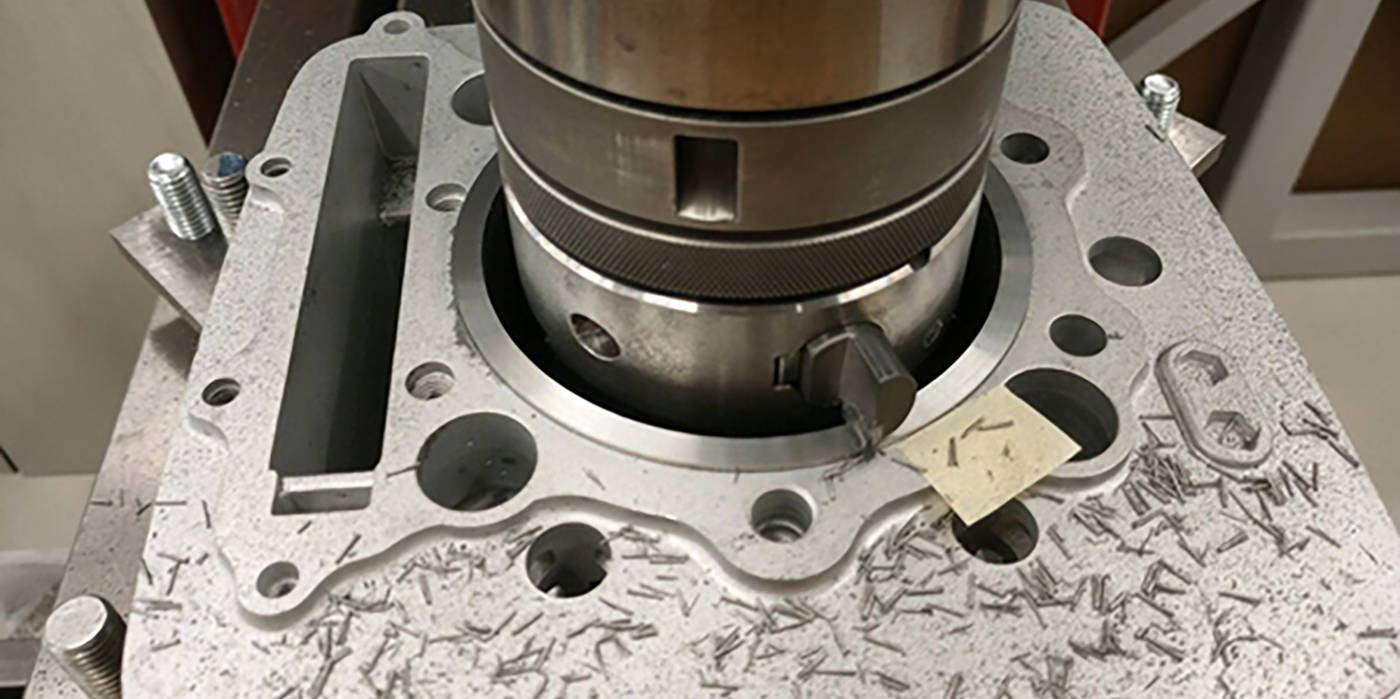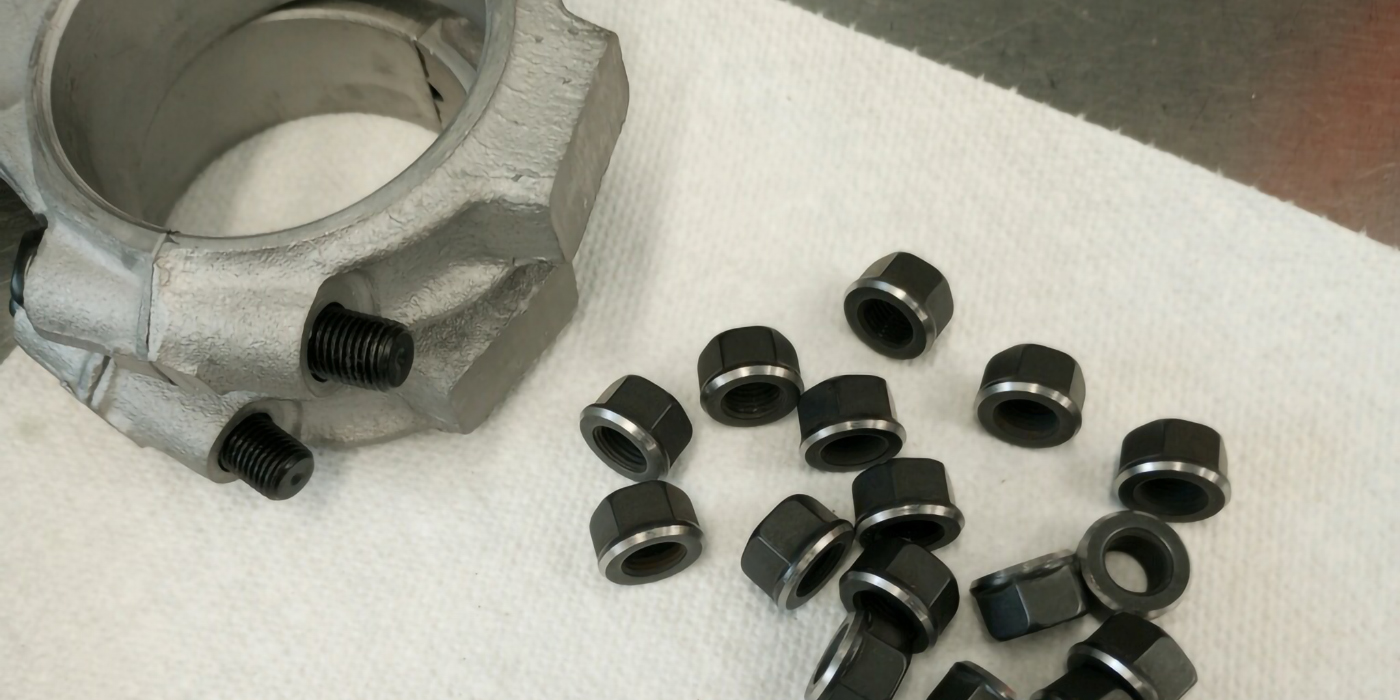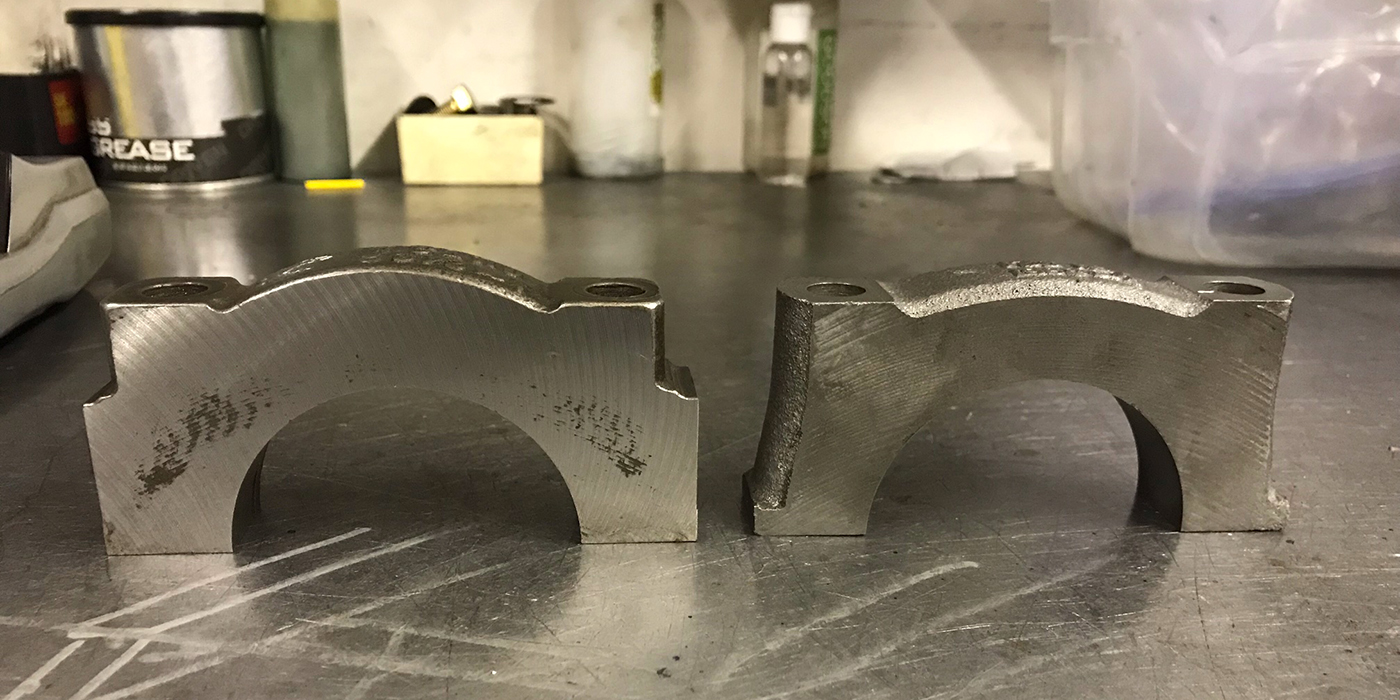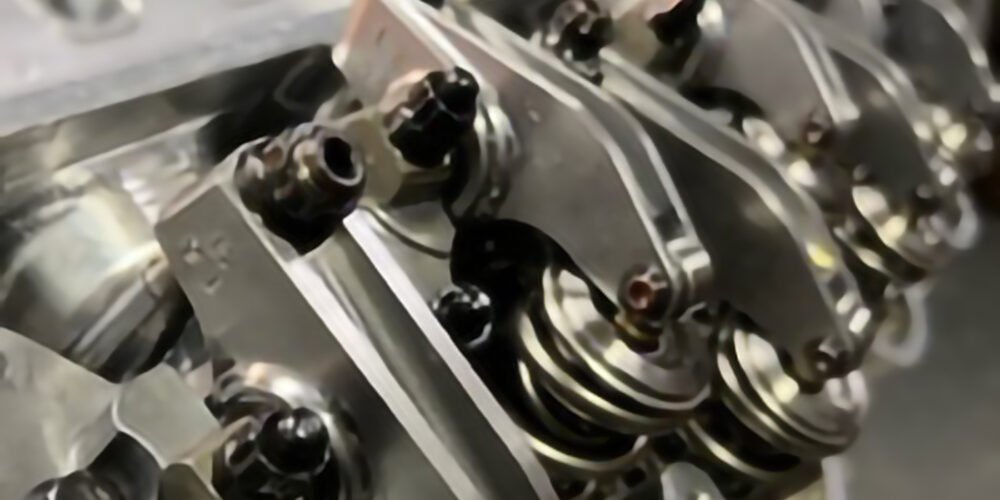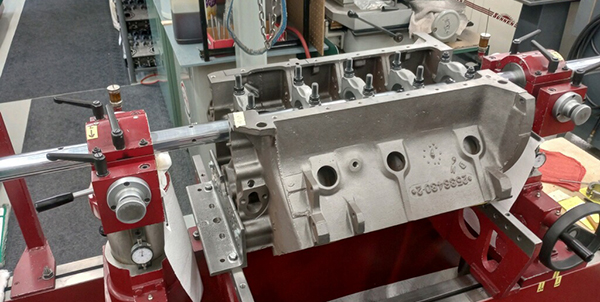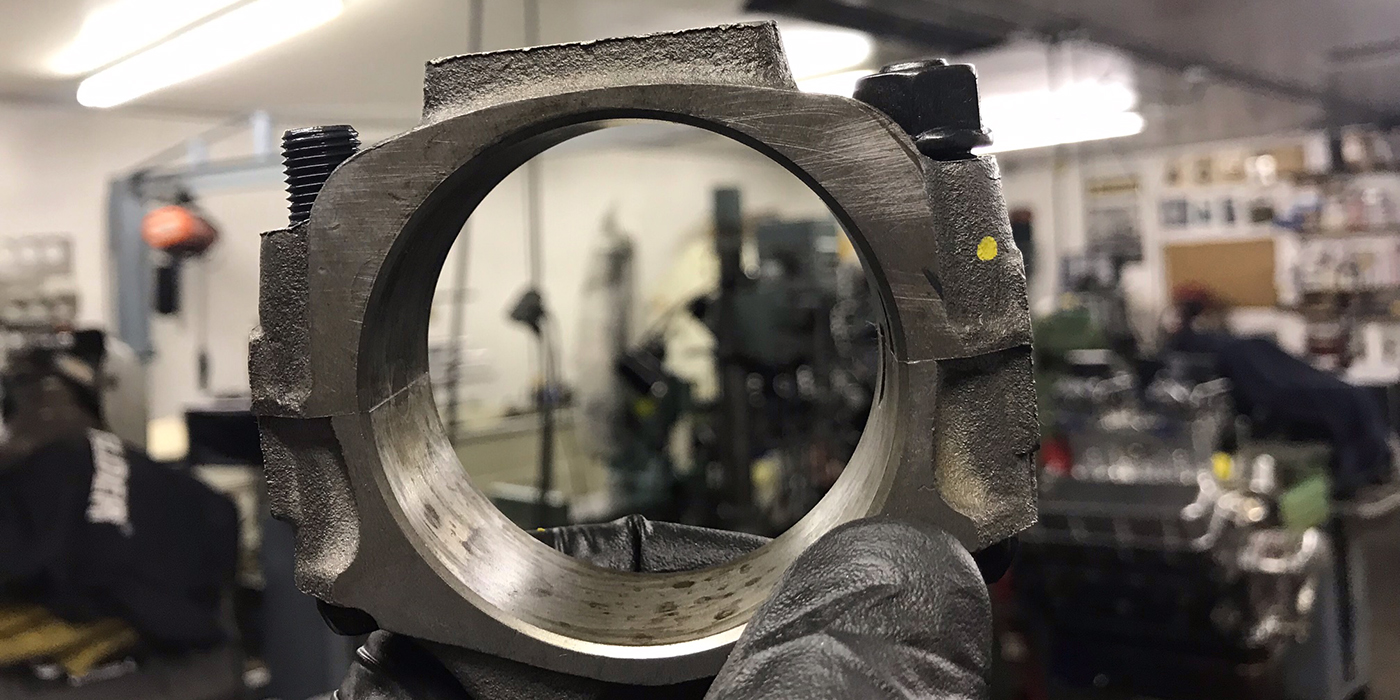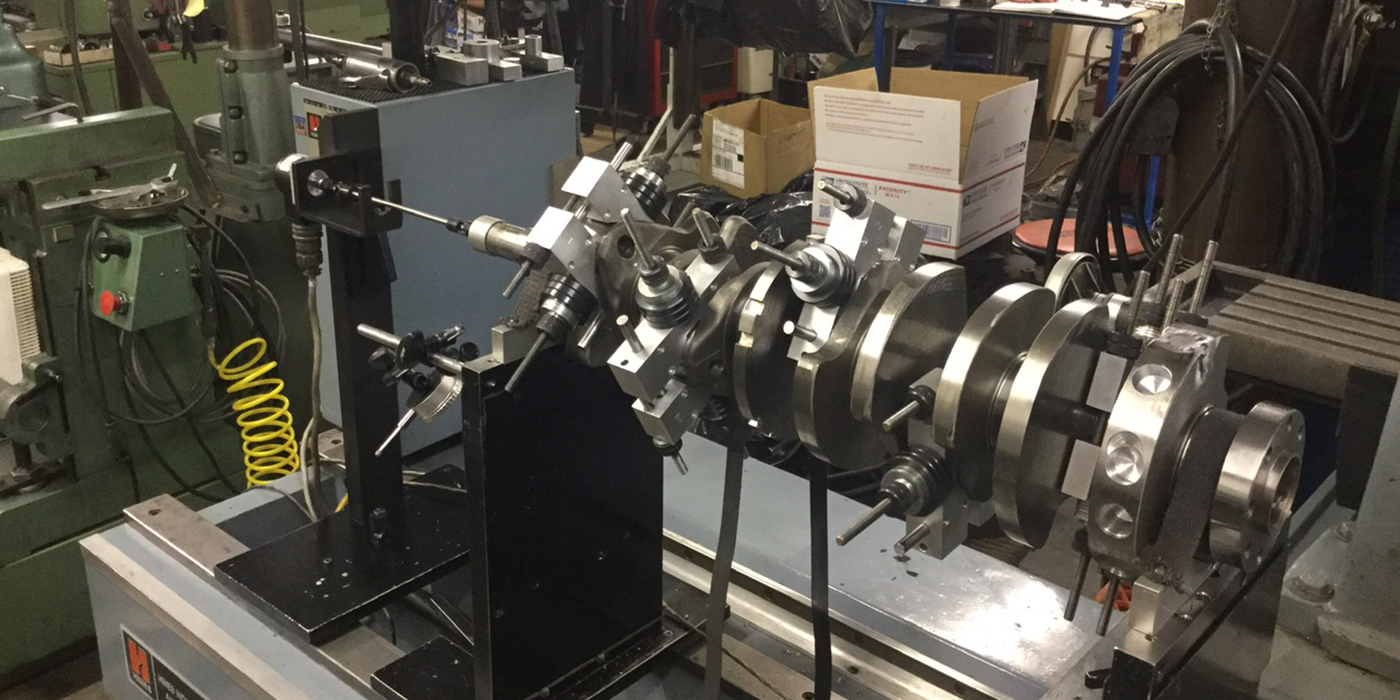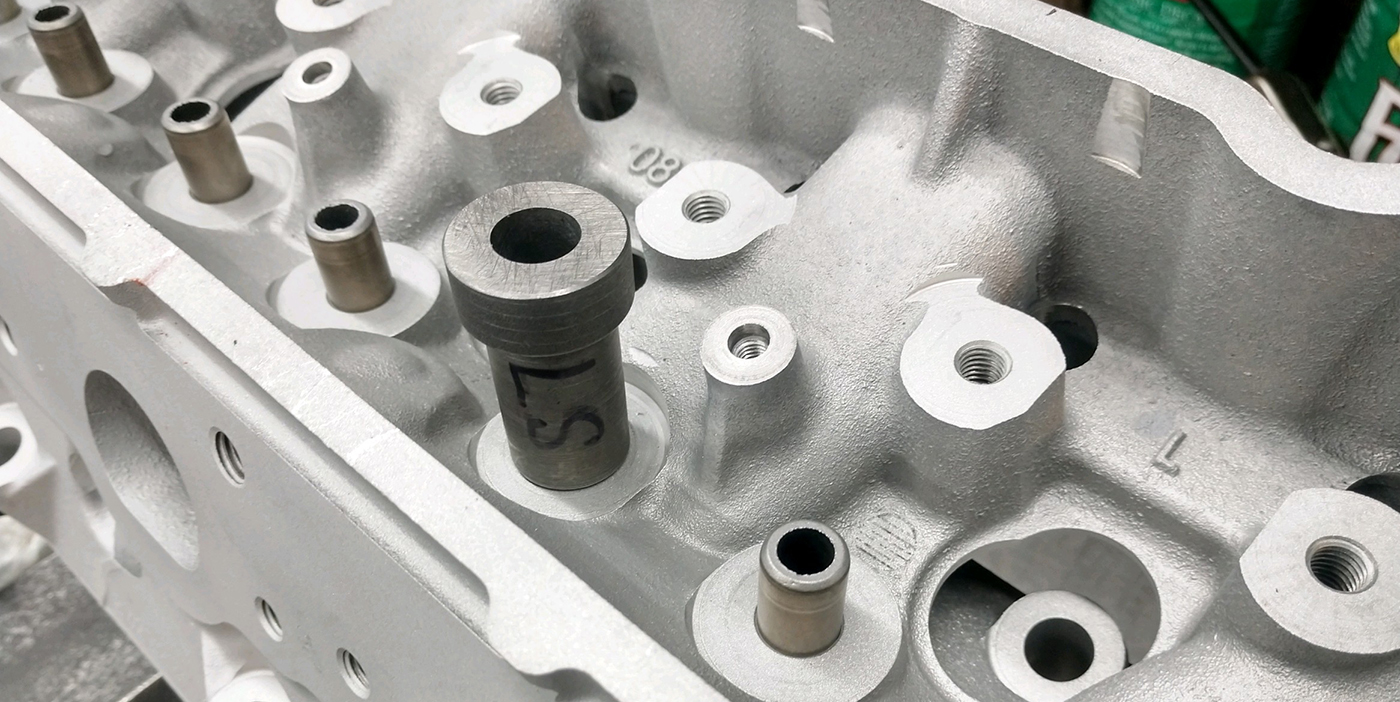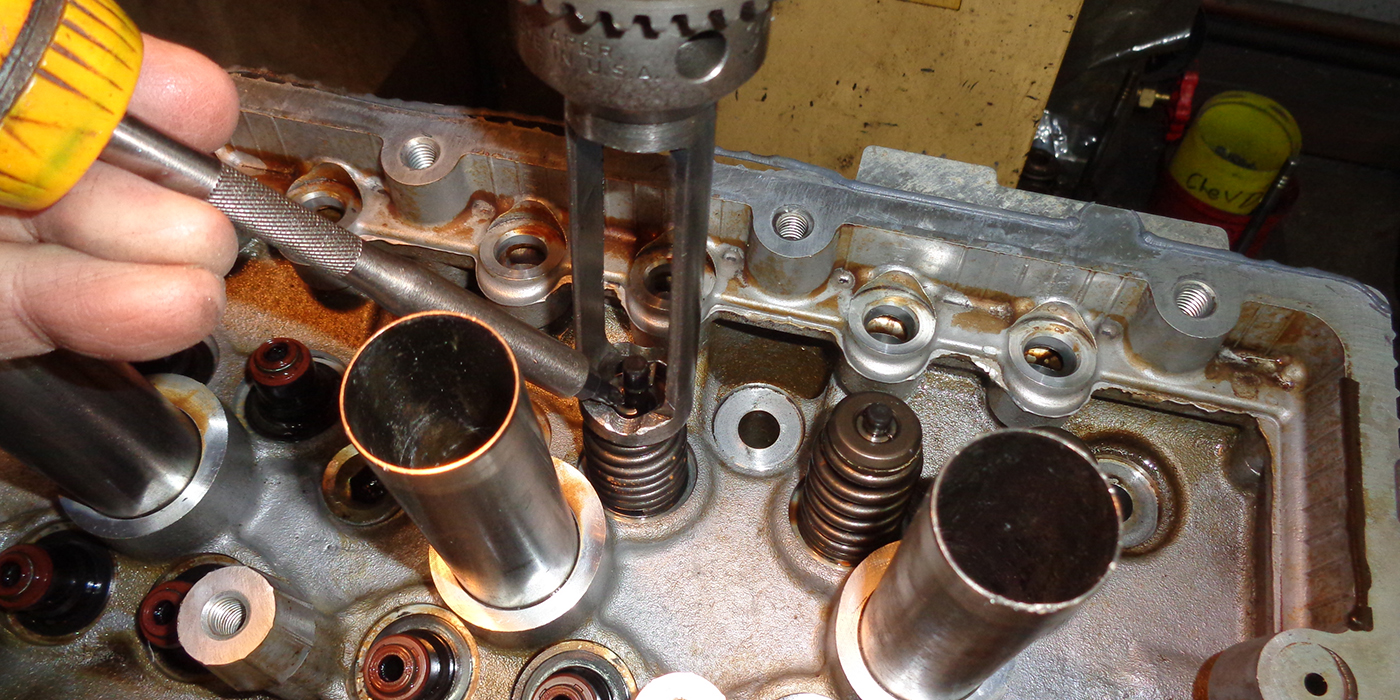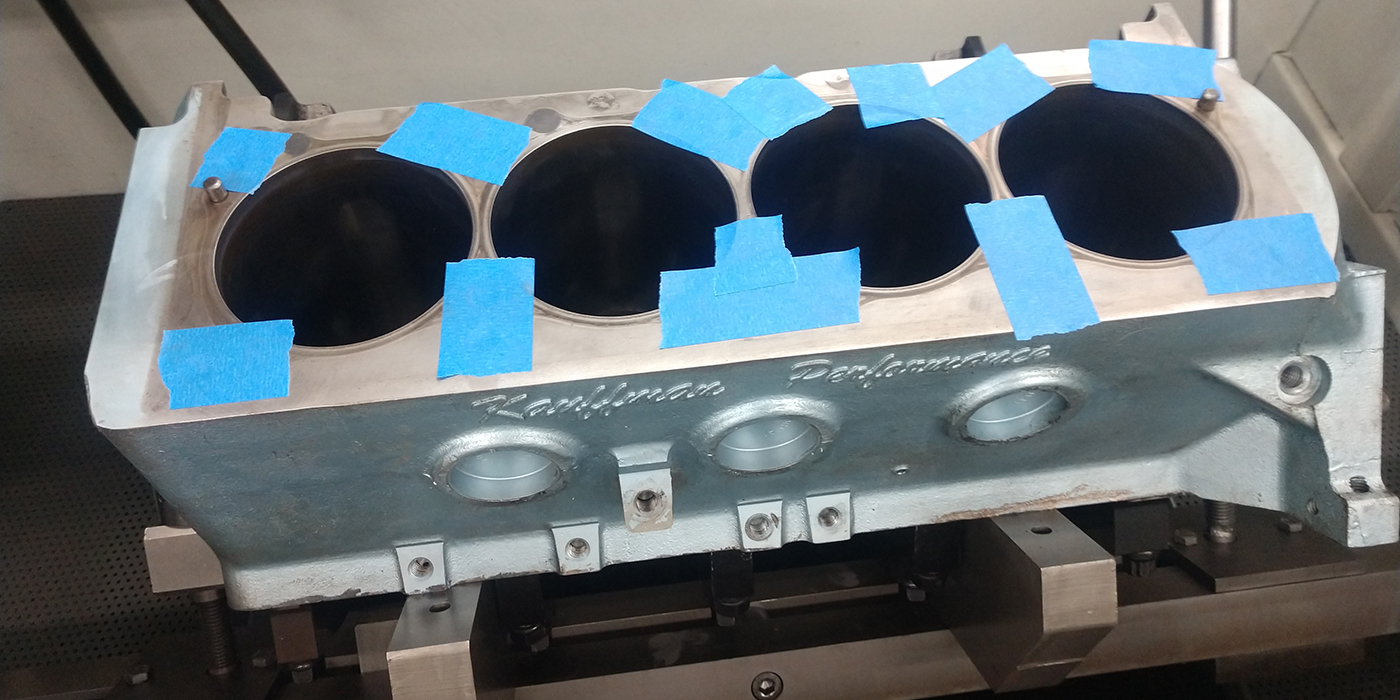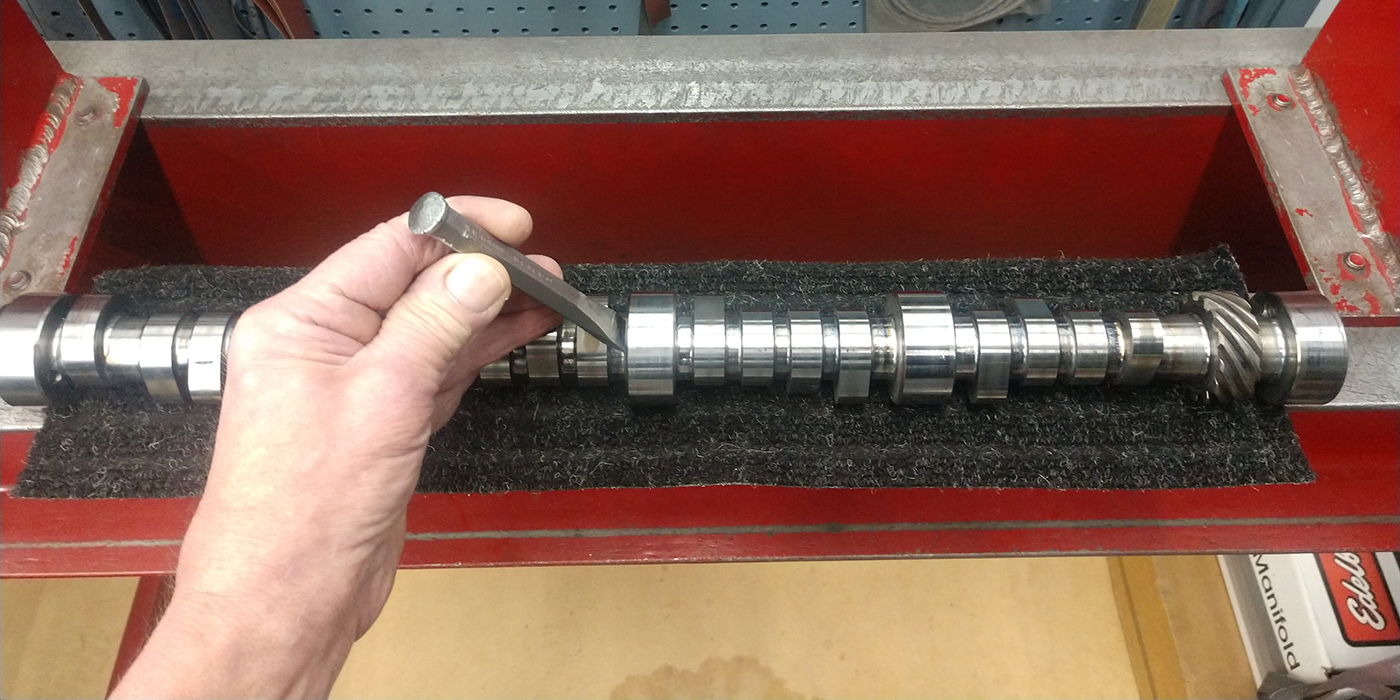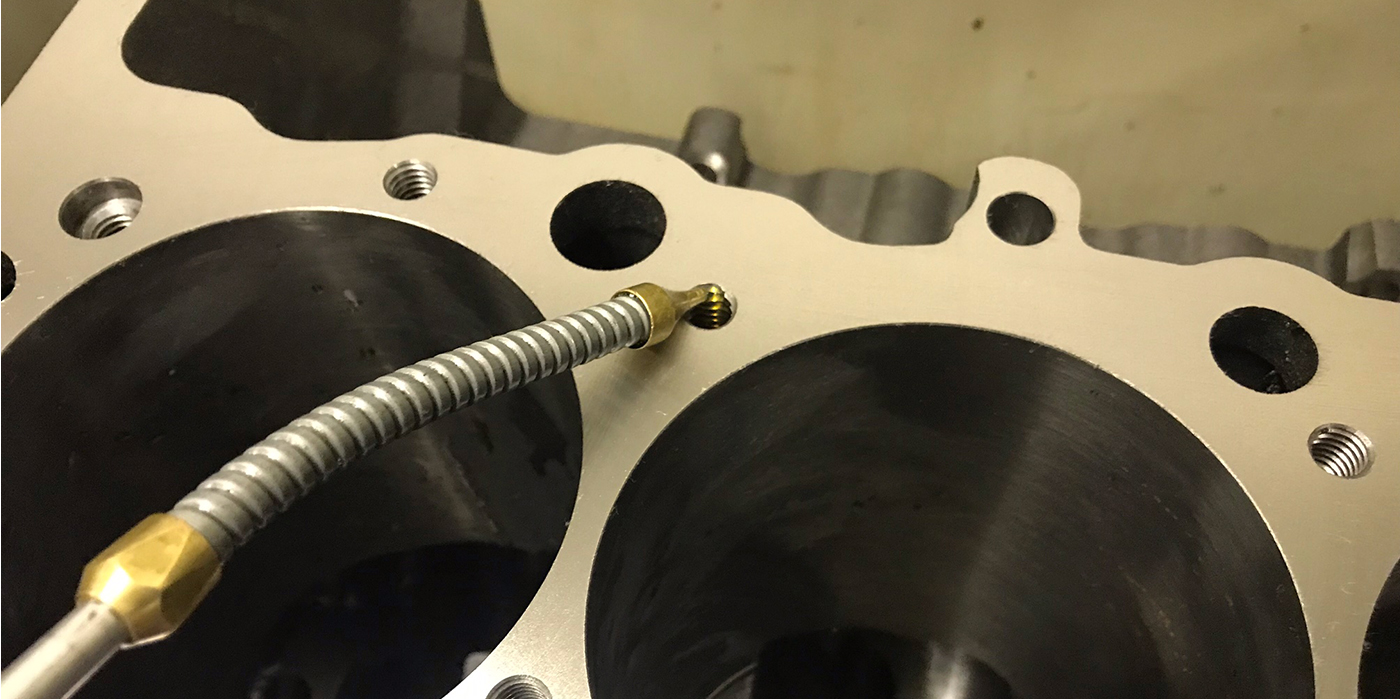Although computers began to make their way
into the automotive aftermarket in the early to mid-1970s, only
recently are rebuilders beginning to realize the benefits of shop
management software for their businesses.
One example of how shop software improves shop
productivity can be found with job tracking programs. Job tracking
allows managers to see the progress of jobs from start to finish
without having to continuously watch over their employees. Steve
Hekman, manager of Burlingame Engines, Grand Rapids, MI, said
he created his own job tracking software program called The Work
Planner to aid in his shop’s production efficiency. “This
program takes shops from the lengthy process of writing job tickets
on a legal pad everyday to the next level,” Hekman said.
Hekman explained what happens in a lot of shops
is a machinist is ready to assemble some engines and finds the
heads for one engine aren’t finished, the rods aren’t done for
another one, and a crank is missing for the third. “In order
to keep everybody busy, another engine is torn down and the problems
just compound,” Hekman said. “Pretty soon you have iron
all over the place.”
Hekman said The Work Planner, which schedules
jobs in four-day cycle completion times, was developed out of
experience ñ and necessity. Hekman said his program, designed
for the three- to 10-man shops, is considered a narrow niche software
that isn’t designed to archive information or store data beyond
the completion of the engine work. “It’s purely a manager
and supervisor tool to make the work on jobs more effective,”
Hekman said, adding the program updates the data for engines in
the system as each job is completed.
Hekman said The Work Planner for Windows®,
developed about four years ago, is available for sale through
Automotive Management Solutions, Grand Rapids, MI. “Keeping
track of what jobs are going on is a process exerted by thousands
of rebuilders everyday,” Hekman said. “The Work Planner
has shortened our production cycle time from five to six days
to build a motor to three to four days. There’s plenty of other
shops out there that could benefit from this program.”
Hekman said before buying The Work Planner,
which is now offered in version 3.0, one shop owner in Texas would
arrive at work at 5 a.m. and spend two hours each morning writing
up job tickets for his employees. “Since buying The Work
Planner, it now only takes him minutes to do what used to take
him two hours,” Hekman said.
In recent years, the increase of computerization
in shops has had an impact on many rebuilders ñ just ask
Darrel Akins of San Leandro, CA. When we last spoke with Akins
in October of 1992, he was owner of Miller & Hodges Machine,
a one-man engine rebuilding operation that had purchased a computer
for his shop in the mid-1980s. Akins said adding the computer
had changed his shop life, allowing him to write job estimates
in just seconds as compared to the 20 to 30 minutes it took before
computerization.
In fact, computerization changed his life even
more. Akins left the machine shop business about two years ago
and now provides a computerized manufacturer inventory service
to rebuilders. Akins said the idea of his service came while working
as a rebuilder, receiving parts catalogs and pricing disks from
manufacturers. Akins said with each update, there seemed to be
computer data inconsistencies. “You might have one bearing
manufacturer designate an undersize on one disk as .001,”
Akins explained. “The next disk update may show this part
with a -010 suffix and another update will show -01. Even though
it’s the same part, the computer system reads this as a new part
number.”
Akins explained rebuilders who utilize computerized
parts pricing in their shops have four choices. First, they could
enter the data by hand, which can take a lot of time. Second,
they could write programs to handle all of the manufacturers’
diskettes. Third, they could rely on software program manufacturers
to provide the data. Or they could use a data service.
Akins, working with his wife Linda, decided
they could provide consistent format of this data from manufacturers
and make it available to other rebuilders in the industry. “All
of our disks provide information in the same format, whether it’s
pricing from Federal-Mogul, Melling, AE Clevite, whatever,”
Akins said. “That’s what makes it so easy for rebuilders
to use. They don’t have to spend the time cross referencing or
entering manufacturers’ disks into their own system.
Akins said his clients tell him which manufacturer’s
lines they need price updates for and the data is available in
a customized parts pricing format. “We provide the cost of
the product as well as whatever markup they want above the jobber
price,” Akins said. “Usually they’ll request customized
pricing of jobber cost plus 15%.”
Computer software also calculates the cost
of doing business in the shop. Ron Silver, president of the Silver
System, an industry software specialist in Greensboro, NC, said
shops using computers now have the capability to account for what
jobs the labor hours go to, how much labor is spent on each job,
how much each job is costing the shop, which employees are productive
and which are not, and the most important, how much profit does
each job generate. Silver said measuring productivity and its
relation to profits could be one of the biggest reasons a shop
needs to acquire management software. Silver, a former rebuilder
himself, said there continues to be a “20/60/20” rule
in this industry, where 20% of a shop’s work doesn’t make any
money; 60% of the jobs do make money; and 20% of the jobs make
a lot of money.
“With shop management systems, you can
determine which jobs are profitable and which ones aren’t,”
Silver said.
Part of the shop management software technology
available from The Silver System are electronic touchpads setup
throughout the shop that are linked to the shop’s main computer
to measure “real” work time. Employee identification
codes and the type of machine being operated is entered into the
touchpad, which keeps up-to-the-minute track of how long each
job takes. Silver said this approach is much quicker and more
accurate than having employees fill out job cards and supervisors
enter the information into a computer or add it up by hand later.
“Shop management through computerization
can not only provide exact labor cost for every job, but it helps
you determine which employees are profitable and which ones aren’t,”
Silver said. Silver also said this type of information is helpful
during employee reviews or when determining bonuses.
Silver said today’s computer software allows
for all the work information and data to be entered into the system
at the end of the day. New progress and work reports can be sent
to the printer that evening, and be made available to employees
the first thing in the morning. Silver said his research of shops
found many shop employees spend nearly the first half-hour of
the day idle, waiting for work reports and tickets from their
supervisor. And in one 12-man rebuilding shop, Silver said management
found it was paying about 47 hours in overtime to its employees,
yet the progress reports were showing there was more than 80 hours
of idle time from the workers. “This isn’t an employee problem,
it’s a management issue,” Silver explained. “Employees
are just waiting for the jobs they’ll be working on that day.”
Silver said by using the touchpad technology, both idle time and
overtime was reduced.
As more technical information, electronic parts
cataloging, business management software programs and new ways
of using computers for shops grows, rebuilders are faced with
difficult decisions as to what to purchase. And like many tools
for the shop, software programs aren’t cheap. Basic business management
software programs today can cost anywhere from hundreds of dollars
up to $3,000. And depending on which program elements are included
or the number of workstations needed, this price can climb between
$7,000 and $10,000.
So where does one go to acquire all the necessary
information to stay competitive? Dave Tower of PTM, Inc., Columbia
Falls, MT, said he sees a trend forming within the shop management
software industry which will integrate software programs with
parts manufacturers and rebuilder associations. “Finding
a one-stop solution for business management systems (BMS) is becoming
obsolete because of the massive surge of information,” Tower
said. “It’s getting to be impossible for one company to completely
compile or deliver that much information with the accuracy needed
for a shop to stay competitive.”
Tower said today’s challenge for software businesses
is to learn how to be united through Systems Management Integration
(SMI), adding business management systems software users will
soon have limitless access to technical and parts information
in the industry.
“We’re trying to education rebuilders
who are looking to purchase software to be aware of systems management
integration,” Tower said. “In fact, we already see it
working today. There’s job estimating programs like QUICK QUOTE
and parts price updating programs like Rebuilders Data Service
already interfacing with a number of popular business management
systems.”
Tower said many parts manufacturers are joining
the software integration trend. “Shops are having to deal
with the complexities of taking and filling orders which increase
every day,” explains Tower. (Ask any rebuilder and they’ll
tell you the number of passenger cars and light truck applications,
as well as heavy-duty, agricultural and industrial applications,
has increased dramatically over the past 15 years). Tower said
this proliferation of parts means an obvious increase in parts,
more part numbers, more paper catalogs and more time being spent
matching the right parts as a package and creating estimates for
parts. “Electronic catalog systems from manufactures are
a quick and easy way to access accurate parts information needed
during preparation of estimates and orders.”
Tower said for the past few years, associations
including the Automotive Engine Rebuilders Association (AERA)
has been active in promoting software integration to its members
through its Professional Rebuilders On-Line Shop Information Systems
(PROSIS). “Using PTM’s software, rebuilders can access PROSIS
technical bulletins and engine spec sheets,” Tower said.
Rebuilder Russell Duffin, co-owner of Duffin
Engine Service, San Antonio, TX, and current AERA chairman, said
he has found PROSIS a helpful tool when it comes to rebuilding
unfamiliar engines. “When your building an engine that you
haven’t seen for a long time, the technical information from PROSIS
can be a lifesaver,” Duffin said.
Introduced to rebuilders at the association’s
Tech Show ’92 in Cincinnati, OH, PROSIS has grown to about 760
users. Dave Hagen, technical specialist for AERA, said using the
PROSIS computer system in the shop can save rebuilders a tremendous
amount of time. “We have more than 1,800 technical bulletins
stored in the PROSIS system,” Hagen said. “These can
be accessed in about a minute. On the other hand, if you’re using
the hard copies, the amount of time it takes you to find one for
a particular engine really depends on your shop’s filing system.”
Hagen also said unless a shop has been a member
of AERA since 1968, they wouldn’t have all of the technical bulletins
that are available on the PROSIS system.
Although Duffin said he uses PROSIS for the
technical side of his business, he uses another software program
for office management such as payroll, scheduling, work orders,
etc. But he’s considering purchasing PTM’s Part Time Manager,
which is integrated with the PROSIS Time-labor Guide and other
engine kit catalogs and parts reference guides.
“The integration availability is really
changing this industry,” Duffin said. “But I am still
amazed at how very few rebuilders are computer functional in their
shops.”
Duffin said he believes many rebuilders are
still intimidated by computers. “I see a lot of these guys
that have been in the business for 30 years who are afraid of
having to learn to use computers” Duffin said. “It’s
a big contrast compared to kids today who are introduced to computers
on their first day of school.”
Duffin said as software programs become more
user-friendly, he expects more rebuilders to use computers in
their shops. “We’re even planning to upgrade our computers
to the Windows® version of PROSIS so the guys in my shop will
be more apt to use the system rather than come to me to make printouts
of the engine information,” Duffin said.
According to MarketScope, a division of Babcox
Publications, a 1997 engine rebuilding survey showed that 43.8%
of respondents from 1996 said they use a computer in their shop
to manage labor costs and job tracking. That number is up from
the 38.7% of respondents in 1992 who said they used a computer
for shop management. Although about 44.6% of the respondents from
1996 said they do not use a computer for shop management, 11.6%
said they are in the process of acquiring one.
Joe Polich, executive vice president of the
Production Engine Remanufacturers Association (PERA) said nearly
100% of all PERs have some type of a computer system in their
office to handle point of sale, accounting and inventory processes.
And Polich estimates more than half of the PERs are using computers
on the shop floor for production management.
Polich said a program that’s helping PERs with
their production is PERA’s Core ID software, a databank of invaluable
information on domestic engine cores including blocks, heads,
crankshafts, camshafts and rods.
Polich said the Core ID is helpful due to its
engine problem search capabilities. When a domestic engine model
is entered into the program, all PERA and AERA technical bulletins
regarding that engine are listed.
“Rebuilders can go directly to the hard
copies of those tech bulletins to see what problems these engines
have had in the past,” Polich said. “It’s a great way
to stay informed about the possible problems and to avoid a warranty
comeback, as well as saving the rebuilder’s time.”
Polich said the Core ID program, which traces
all domestic and some common import engines from 1985 to 1994,
is available for sale to PERA members only.
Silver said another benefit of computerization
in the shops is memory storage. “With management software
like ours, information attributing which equipment was used and
which employee completed the work can be stored for more than
10 years,” Silver said. “This type of information is
useful when something comes back as a warranty return. You can
pinpoint exactly when the work was done and by whom.”
PTM’s Tower believes the rebuilding industry
is finally aware of the need to computerize to stay competitive.
“Five years ago, the rebuilding industry
was 10 years behind the commercialized world,” Tower said.
Three years ago, we grew to be about five years behind everyone
else. In three years, we should be caught up with the rest of
the industries.”
Tower also believes the internet will be profitable
for rebuilders and others in the automotive aftermarket. Although
Tower estimates only about 2% to 7% of the rebuilding industry
is actually doing business through the internet, that number is
excepted to increase dramatically over the next five years, especially
overseas. Tower said he knows of one engine rebuilder who’s had
a website about 11 months. “Since that time, he’s added about
$20,000 in new engine sales to countries including Saudi Arabia
and British Columbia. That says a lot for these buyers who are
willing to purchase these engines from someone sight unseen,”
Tower said.
Tower also said in the future, more and more
technical information will be available for rebuilders on the
internet, and shops will be able to download parts and catalog
information.


